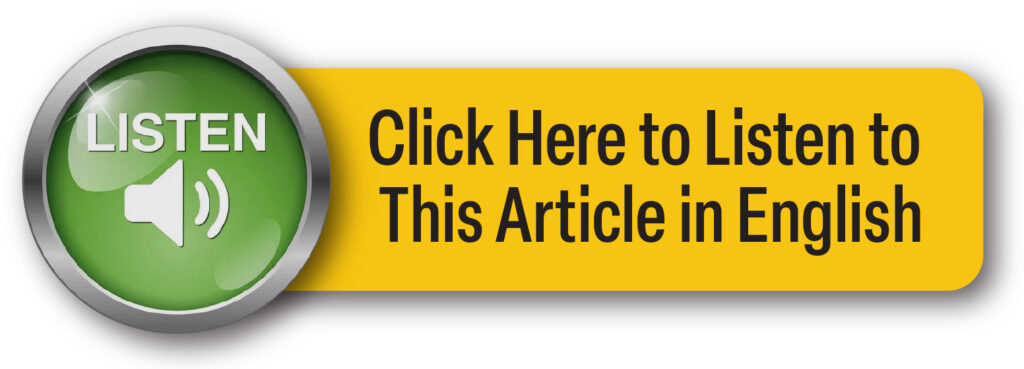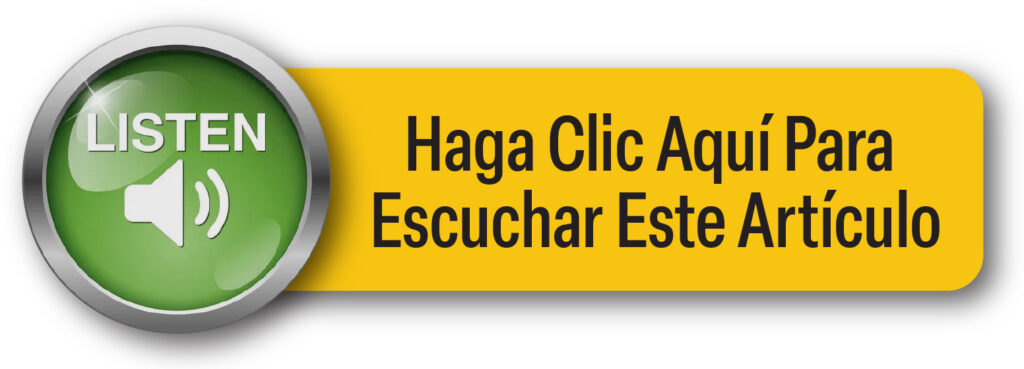Baby, It’s Cold Outside
Recognizing the symptoms of hypothermia and frostbite
Este es nuestro intento de convertir las historias en audio español usando Inteligencia Artificial. Aún así le recomendamos que reconfirme ciertas palabras clave y temas. ArborTIMES no garantiza ni se responsabiliza de la conversión del inglés al español de los relatos.
Cold-weather stress may account for only a small number of injuries among tree care professionals, but they can leave lasting damage if left untreated. Here’s what to look for and how to protect yourself against the winter chill this season.
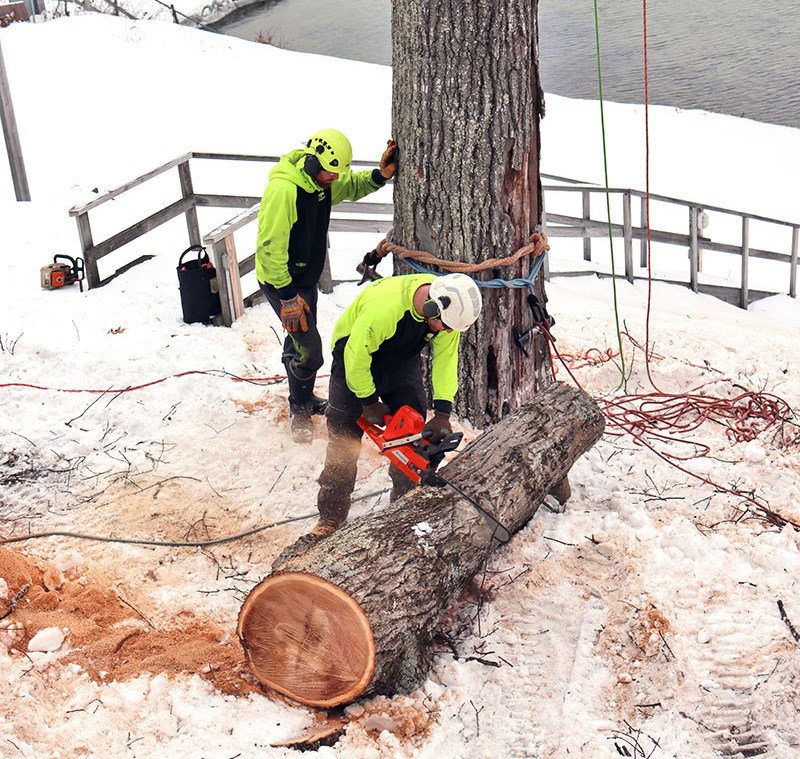
Tree care work has the highest rate of work-related fatalities in the U.S. and ranks 76th for nonfatal injuries, according to the U.S. Bureau of Labor Statistics. While most of these deaths and accidents occur from falls, equipment, and falling tree material, frigid weather-related injuries are often overlooked.
Known as a silent killer, approximately 1,500 people die each year from hypothermia in the U.S. Together with frostbite, cold weather illness and injuries can sneak up on workers who may push through uncomfortable conditions to get the job done.
Here’s how to stay safe in the field and protect yourself from the insidious dangers of hypothermia and frostbite.
Effects of Hypothermia
Northern tree workers are all too familiar with how frosty working conditions can get. But how cold is too cold?
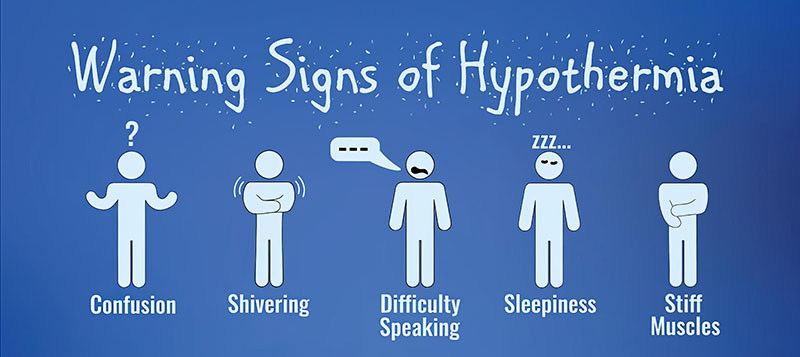
Hypothermia is defined as a drop in body temperature below 95 F, which is below what is required for normal bodily function. When exposed to sub-freezing temperatures and a consistent wind chill, it can be a struggle to retain body heat, giving hypothermia the opportunity to sneak in.
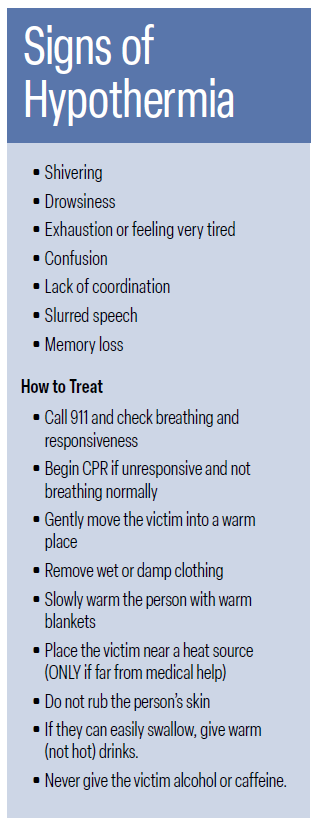
Severe cold stress can quickly turn into a case of lasting damage to muscle tissue if not properly treated. Moreover, cold stress can be compounded by a lack of winter-rated gear, exposed skin, and wet or damp clothing.
Heat loss occurs when heat radiates away from the body through exposed or unprotected skin. To produce more heat than the body is losing, your thyroid and adrenal glands release large amounts of hormones to boost metabolism, blood pressure, and heart rate.
The brain’s hypothalamus sends signals to the blood vessels to constrict, moving the blood further from the skin’s surface where heat is lost so it can concentrate on keeping the vital organs warm.
The hypothalamus also commands your muscles to shiver to produce more heat for the body, kicking the metabolism into overdrive at a rate of two to five times what’s normal.
But don’t think you’re in the clear if the shivering stops. The opposite, in fact, has occurred. You’ve now progressed into severe hypothermia.
If left in this state, your brain will stop properly functioning. This may make you feel disoriented, dizzy, and even make you want to take all your clothes off. You’ll be in serious trouble if you don’t get to safety soon, as permanent brain damage can occur.
Chronic illnesses such as diabetes, hypothyroidism, and hypertension can put tree workers at greater risk of succumbing to the elements. While avoidance is best, catching these types of injuries early and streamlining the reporting process is crucial to protecting tree worker crews.

Effects of Frostbite
Frostbite occurs when the body is exposed to low temperatures, resulting in freezing of the skin and underlying tissues.
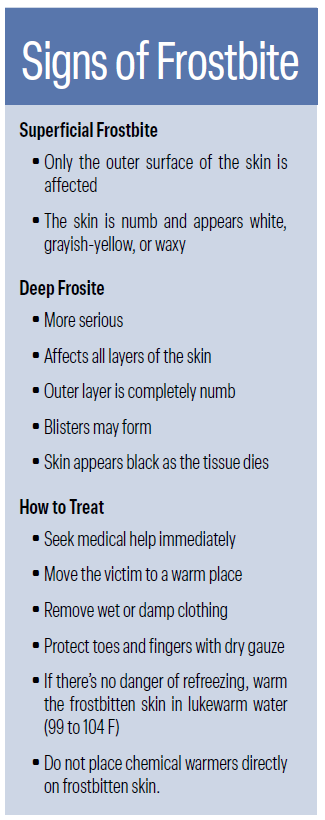
Frostbite is most common in the fingers, toes, nose, ears, cheeks, and chin. In addition to temperature, it can also result from direct contact with frozen metal, ice, and very cold liquids. Even protected skin can succumb to frostbite.
There are three degrees of frostbite:
• Frostnip A milder first-degree injury that doesn’t cause permanent damage to the skin.
• Superficial Frostbite More serious, this second-degree injury occurs when frost crystals begin to form in the skin, causing it to feel warm and start to swell.
• Deep Frostbite Third-degree injuries can occur when blood flow to blood vessels, nerves, muscles, and bones stops. This can cause permanent damage, depending on how deep and how long the tissue was frozen. Amputation may be needed if the frozen tissue dies.
As in cases of hypothermia, if a person experiences dangerously cold weather conditions for an extended time, blood flow to the extremities can be reduced, causing frostbite in the fingers, toes, hands, and feet.
The constriction of blood vessels redirects blood flow to the vital organs, supplying them with much-needed oxygen and maintaining the body’s core temperature. If prolonged, this will cause the skin and nearby tissues to begin to die from the outside in.
Dress for Protection
Wearing proper winter-rated gear is extremely important in preventing cold stress. Choose wool or synthetic material over cotton, as these materials retain their insulative ability even when wet.
To increase insulation, consider wearing at least three layers of loose-fitting clothing with wool or a synthetic as your inner and middle layers. Wear a water-resistant outer layer that also allows ventilation to alleviate overheating. Change out of wet clothing often.
Since much heat is released through the head, be sure to wear a hat or hood. Balaclavas are also a good choice to keep the face and neck protected. Keep your extremities warm by wearing waterproof, insulated boots and gloves. Moreover, have on hand extra socks, gloves, hats, and changes of clothing.
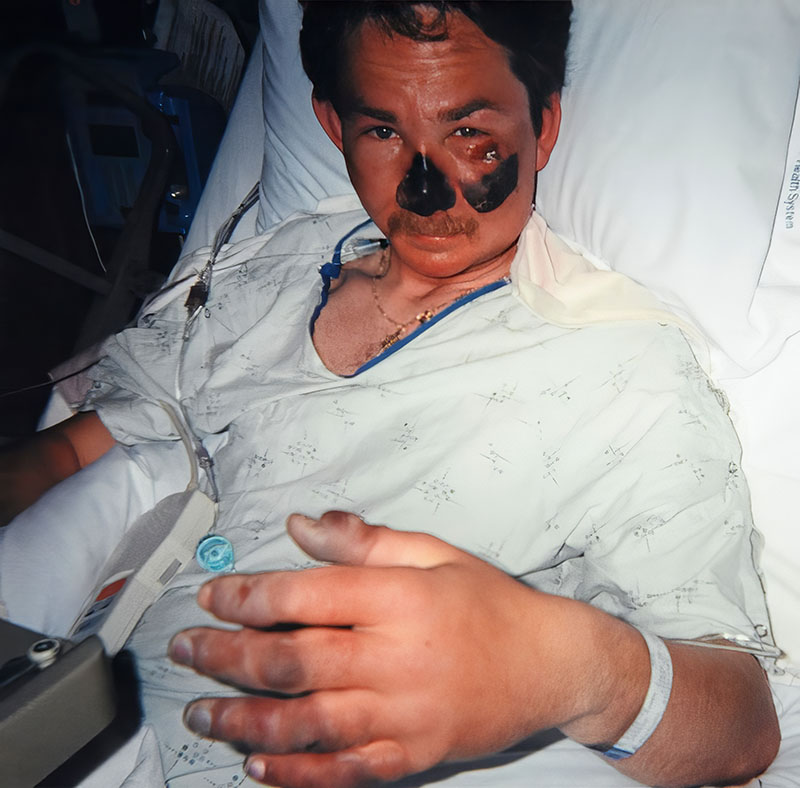
Workplace Safety
In-the-field medical treatment for hypothermia and frostbite are similar. First, seek medical help immediately. Then, gently move the victim into a warm place.
Remove wet or damp clothing. Slowly warm the person with warm blankets, protecting toes or fingers with dry gauze if frostbite is suspected. Do not rub the damaged skin.
If the victim can easily swallow, give them warm (not hot) liquids. If medical help is far off, place the person near a heat source. Never give alcohol or caffeine to someone with hypothermia.
While eliminating tree workers’ exposure to cold-weather work may not always be possible, providing a warm place for them to rest and change out of wet clothes will go a long way in preventing hypothermia and frostbite.
While OSHA does not have cold-weather standards for businesses, employers do have a “duty” to protect employees against hazards that can include cold stress and freezing temperatures.
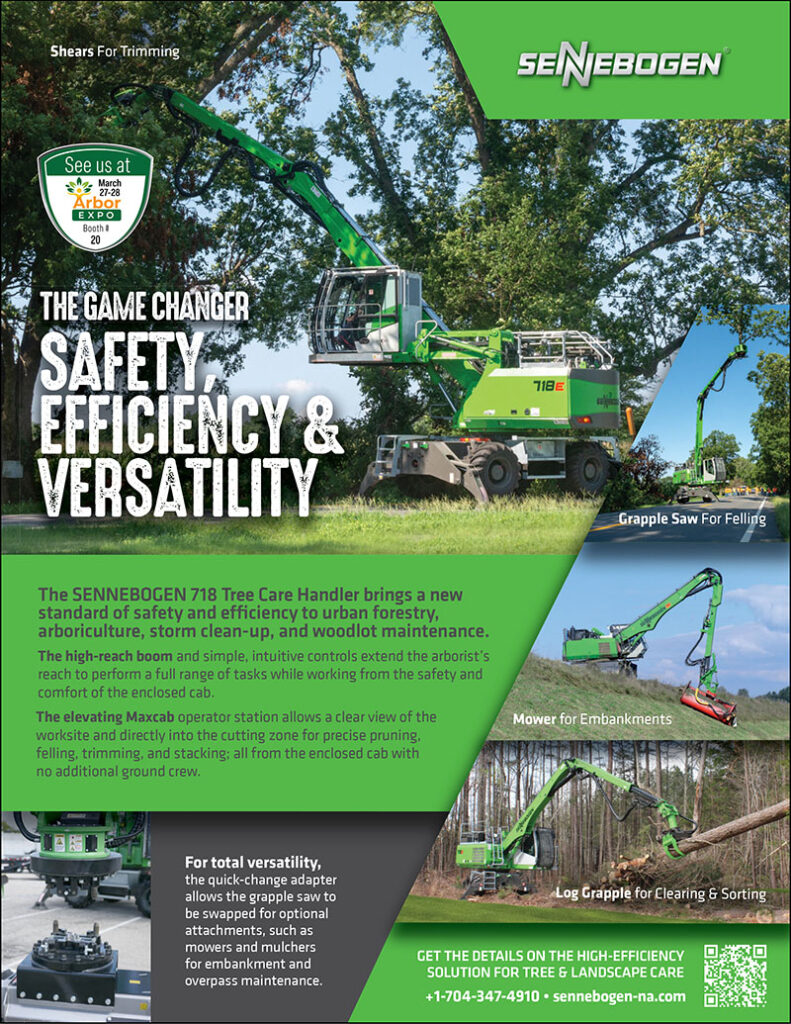
To ensure injured tree workers can be stabilized while awaiting emergency care, all arborists should be trained in first-aid practices. In addition, chemical heat packs and medical thermometers should be standard in all first-aid kits.
Closely monitoring fellow workers through a buddy system could help prevent cold-related incidents and provide a fail-safe to quickly seek medical help if warranted.
Cold weather awaits, but with awareness of the dangers and some necessary protocols, workers can safely navigate their workday without succumbing to these winter risks.

